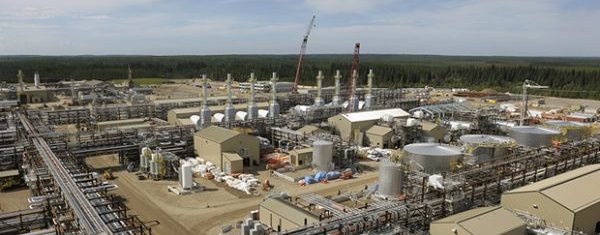New pipelines no silver bullet for battered Canadian oil industry

Investment in the Canadian oil industry has rapidly shrunk since 2014 and companies have laid off thousands of workers. Cenovus photo.
Canadian oil industry needs crude prices to pick up
By Nia Williams
CALGARY, Alberta, Nov 30 (Reuters) – Canada’s oil sands producers are getting a long-awaited boost in export capacity, but the two pipeline projects approved this week will not be a silver bullet for the Canadian oil industry woes unless crude prices pick up or companies improve their operating efficiency.
The Canadian government approved Kinder Morgan’s plan to triple volumes on its Trans Mountain pipeline to 890,000 barrels per day, and cleared Enbridge Inc’s Line 3 replacement project, which will roughly double capacity to 760,000 b/d. Enbridge’s Northern Gateway pipeline was rejected.
The two approvals were welcomed by the oil industry, which has pushed for years for new capacity to solve congestion on export pipelines that in the past has sent the discount on Canadian heavy crude to more than $40 a barrel.
Producers said delays in new pipeline construction cost them millions in revenue, hurt Canada’s economy and meant the industry was too reliant on one customer – the United States – when it should be trying to diversify into Asian markets.
But without a sustained improvement in the crude price, Canada’s oil sands, which hold the world’s third-largest crude reserves and produce about 2.4 million b/d, will struggle to expand significantly beyond the new projects already under construction.
Oil sands production is expected to grow on average by 128,000 b/d annually until 2021, after which growth will more than halve to just 59,000 b/d, according to forecasts from the Canadian Association of Petroleum Producers.
U.S. crude prices surged above $49 a barrel on Wednesday on a deal by international producer group OPEC to tackle global oversupply, but that is still below the $55-$60-a- barrel range analysts estimate new oil sands thermal projects require to break even.
“Let’s say the price of crude never corrects itself, then pipelines would be a moot point,” said Dirk Lever, an energy infrastructure analyst at AltaCorp Capital in Calgary. “The (Canadian) energy industry had two huge issues to face – egress and price. Price is still in front of us.”
ENVIRONMENTAL, REGULATORY HURDLES
Suncor Energy, the country’s biggest oil and gas producer, said both the long-term crude price environment and market access played a part in its decisions on new projects.
Several factors other than price may also blunt the positive impact of federal government pipeline approval.
Line 3 is facing stiff opposition on the U.S. side of the border and awaiting regulatory approval from the Minnesota Public Utilities Commission, while Trans Mountain needs an environmental assessment from the province of British Columbia and is fiercely opposed by environmental groups vowing civil disobedience.
Vessel size limits in the Port of Vancouver, where crude from Trans Mountain will be loaded on tankers for export, mean it may not always be economic to ship barrels to Asia.
If the pipeline expansions can get built, they will remove at least one major barrier deterring investment in the oil sands, which carry some of the world’s highest operating costs and have seen investment shrink rapidly since 2014.
Capital investment in the energy sector is expected to total C$30 million ($22.34 million) in 2016, half of what it was in 2014, according to the Alberta government, while companies have laid off tens of thousands of oil industry workers.
About 20 oil sands projects have been deferred since oil prices began their slide two years ago, with two companies, Royal Dutch Shell and Statoil ASA, citing lack of energy infrastructure as part of the reason.
(Reporting by Nia Williams; Editing by Peter Cooney)









